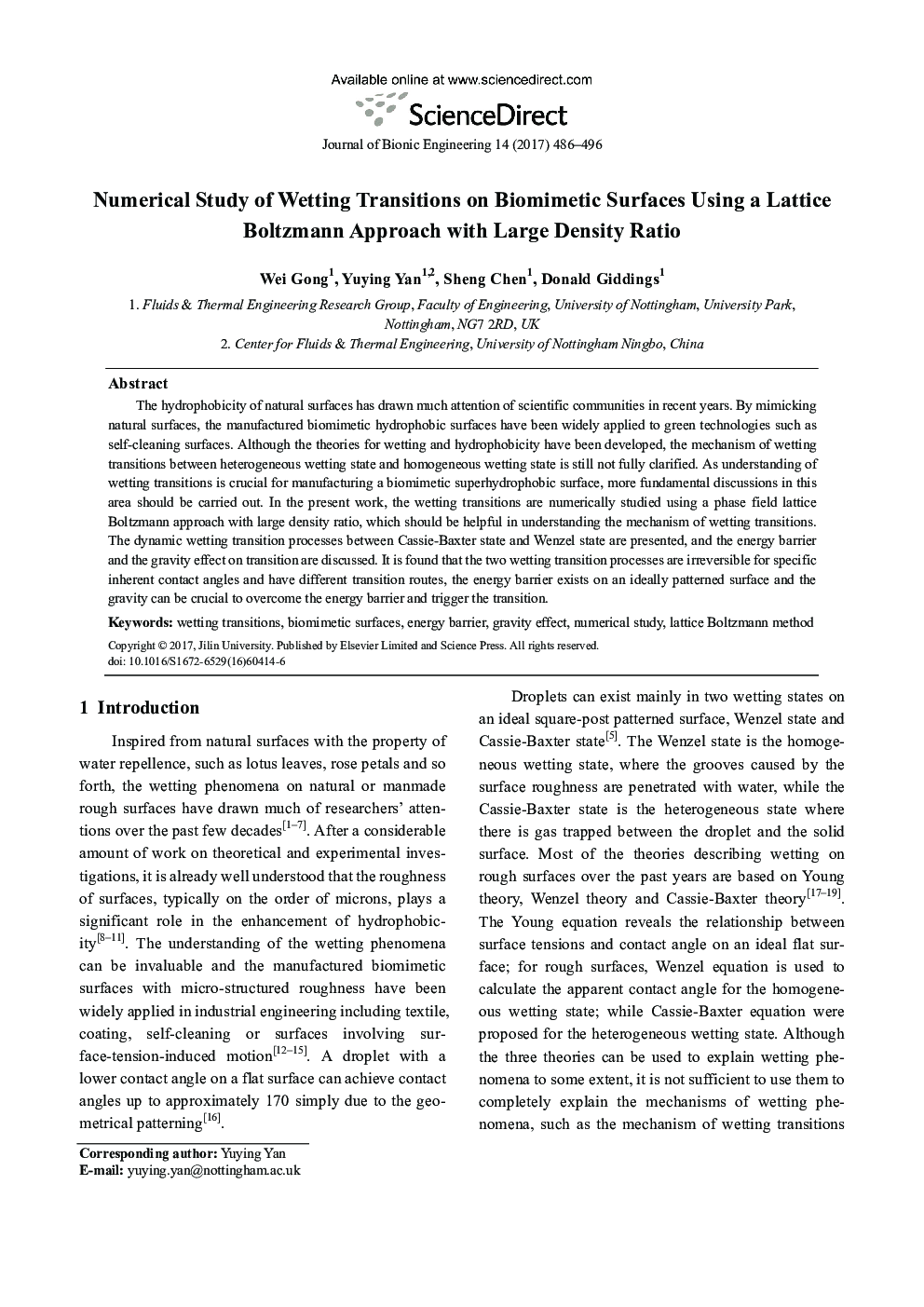| Article ID | Journal | Published Year | Pages | File Type |
|---|---|---|---|---|
| 7216469 | Journal of Bionic Engineering | 2017 | 11 Pages |
Abstract
The hydrophobicity of natural surfaces has drawn much attention of scientific communities in recent years. By mimicking natural surfaces, the manufactured biomimetic hydrophobic surfaces have been widely applied to green technologies such as self-cleaning surfaces. Although the theories for wetting and hydrophobicity have been developed, the mechanism of wetting transitions between heterogeneous wetting state and homogeneous wetting state is still not fully clarified. As understanding of wetting transitions is crucial for manufacturing a biomimetic superhydrophobic surface, more fundamental discussions in this area should be carried out. In the present work, the wetting transitions are numerically studied using a phase field lattice Boltzmann approach with large density ratio, which should be helpful in understanding the mechanism of wetting transitions. The dynamic wetting transition processes between Cassie-Baxter state and Wenzel state are presented, and the energy barrier and the gravity effect on transition are discussed. It is found that the two wetting transition processes are irreversible for specific inherent contact angles and have different transition routes, the energy barrier exists on an ideally patterned surface and the gravity can be crucial to overcome the energy barrier and trigger the transition.
Keywords
Related Topics
Physical Sciences and Engineering
Engineering
Biomedical Engineering
Authors
Wei Gong, Yuying Yan, Sheng Chen, Donald Giddings,
